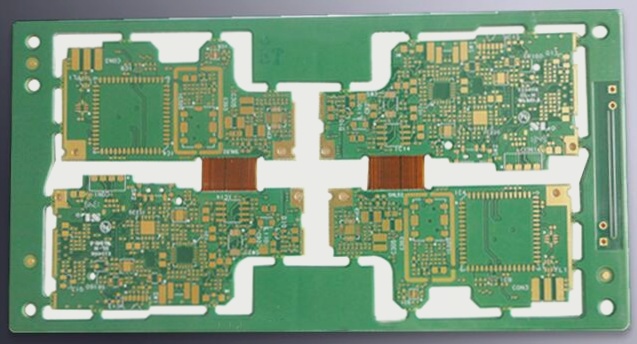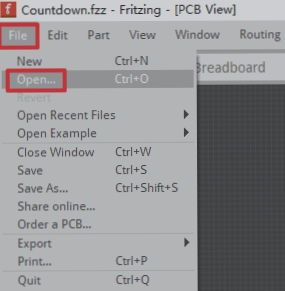1. The general structure when drilling micro-holes in a printed circuit board consists of three layers: the top layer is the cover plate, the middle layer is the PCB itself, and the bottom layer serves as the backing board.
2. In modern PCB manufacturing, ensuring high drilling quality and efficiency is crucial. Therefore, the correct selection and pairing of the cover plate and backing plate are particularly vital.
3. Currently, the industry commonly uses various types of cover plates, including aluminum sheets, composite aluminum covers, phenolic plates, epoxy glass cloth panels, and cold-rolled plates.
4. For backing plates, frequently utilized options include high-density wood backing boards, phenolic wood mats, melamine wood boards, phenolic paper backing boards, high-density fiberboards, and aluminum foil composite wood backing boards.
5. When drilling micro-holes in printed circuit boards, the backing plate must meet specific criteria: it should possess adequate surface hardness to minimize burr formation on the hole surface and prevent excessive wear on the drill.

The composition must exclude resin to prevent drilling debris; it should possess high thermal conductivity to swiftly dissipate the heat generated during drilling and reduce the temperature. Additionally, sufficient elasticity is necessary to minimize resistance during drilling, allowing for precise drill positioning, which enhances hole location accuracy. At the same time, rigidity is essential to prevent drill vibration. Therefore, selecting the appropriate cover is critical to the drilling process.
Moreover, the role of the backing plate is equally significant. In PCB drilling, the backing plate is placed beneath the material being processed to protect both the PCB and the drilling machine. It aids in ensuring the quality of micro-holes by drilling through the plate. To maintain the quality of the hole processing, the backing plate should exhibit good flatness and excellent dimensional tolerance, be easy to cut, and feature a hard, flat surface capable of withstanding high drilling temperatures. Additionally, the resulting drill waste should be fine and powdery for easy cleanup.
When conducting micro-hole drilling on printed circuit boards, the choice of suitable cover plates and matching PCB types can enhance drilling quality, increase yield, prolong drill life, and lower production costs. Consequently, developing a new type of cover plate that offers superior performance at a reasonable cost—while meeting the demands of high-end PCB drilling—has become a pivotal research focus for cover plate manufacturers.
1. Current Status of Domestic and Foreign Development of Covers and Pads
The cover and backing plates for PCB drilling emerged nearly simultaneously with the PCB itself. During the drilling process, covers and backing plates must be positioned both underneath and atop the PCB to protect it and improve hole accuracy. Initially, phenolic resin cover plates were utilized, which met conventional drilling requirements to some extent. However, due to issues with drilling contamination, epoxy fiberglass boards were briefly adopted in the PCB industry, though they failed to completely resolve the contamination problem and were also costly, leading to their short-lived use.
In the early 1990s, wood fiberboards began to be favored as drilling pads due to their affordability, stability, lower drilling pollution, and reasonable heat resistance. By the mid to late 1990s, PCB drilling processes started to employ another type of cover plate with enhanced thermal conductivity—metal covers. Initially, soft aluminum was used, which significantly outperformed resin in thermal conductivity, lowering the maximum drill bit temperature from 2,000°C to over 1,000°C, thus mitigating issues like poor hole positioning and broken bits. Subsequently, aluminum alloy cover plates with improved processing characteristics became prevalent and remain widely used.
As the 21st century began, the trend toward smaller hole diameters (below 0.3 mm) and increasing drilling quality prompted manufacturers to innovate and enhance traditional phenolic resin paper backing products. Improvements were made in material characteristics, density, surface hardness, flatness, and thickness uniformity. Additionally, to address the challenge of slippage from the hard surface of alloy aluminum covers, lubricating aluminum sheets were developed.
Industry classifications often categorize covers based on material composition into four types: lubricating aluminum sheets, ordinary aluminum sheets, phenolic paper covers, and epoxy glass cloth covers. Backing boards are mainly classified into three categories: wood backing boards, wood fiber boards, and phenolic paper backing boards. Currently, aluminum sheets dominate the domestic market for cover plates, accounting for approximately 82.2%, while wood pulp boards represent about 59.1% of backing plate usage.
With advancements in high-end, functional, and specialized PCB technology, cover plates, as auxiliary materials for PCB drilling, are evolving toward refinement, diversification, and functionalization. The type and quality of the cover plate are critical factors influencing the hole quality during PCB drilling, processing efficiency, yield, drill longevity, and the overall reliability of the printed circuit board.




